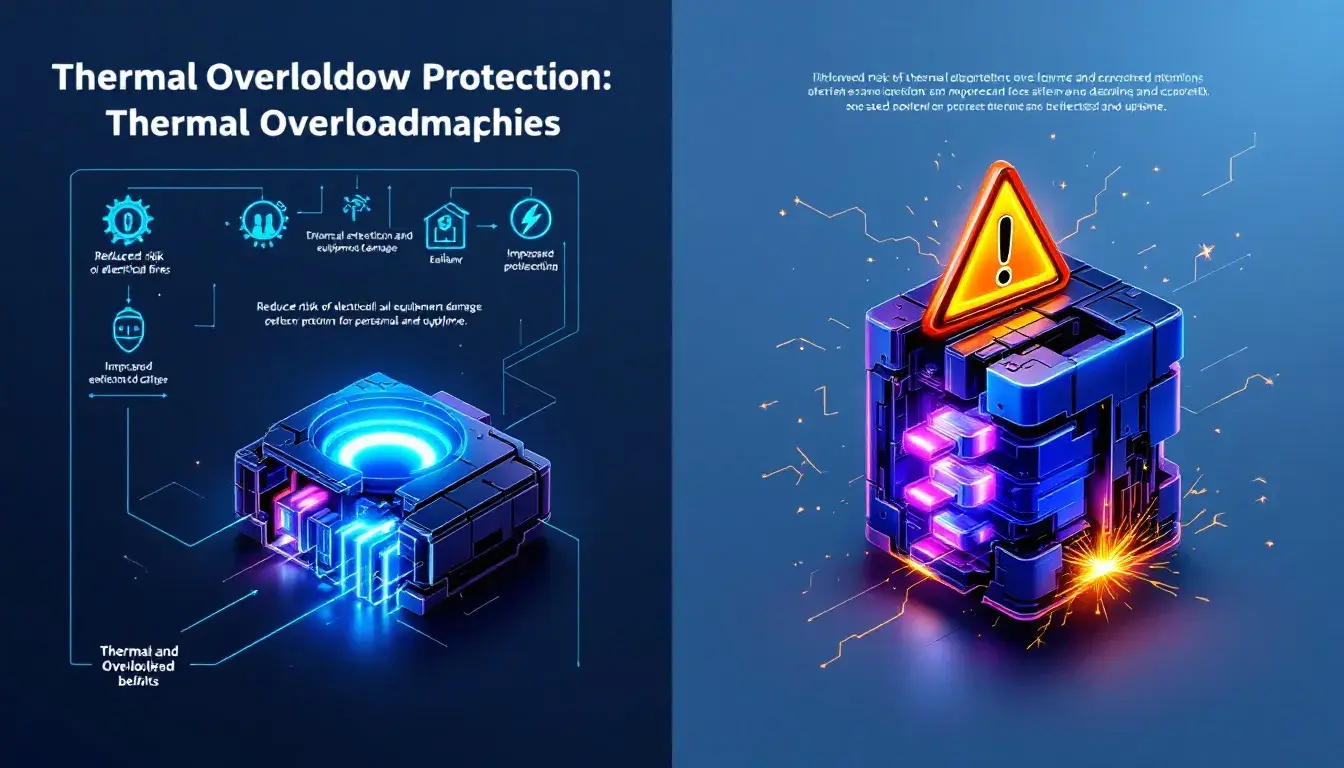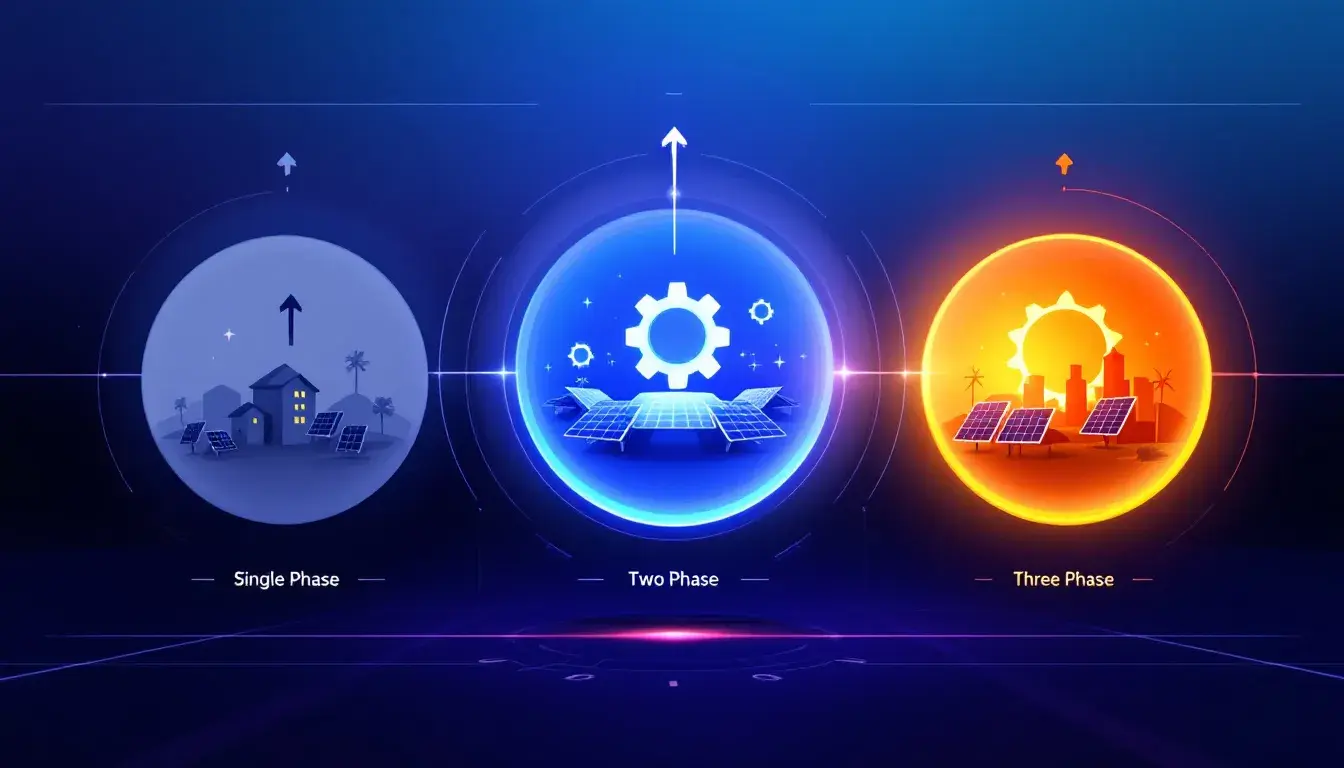Difference Between Contactor vs Relay: A Simple Guide for Beginners
Table of Contents
ToggleWondering whether to use a contactor or a relay? When considering contactor vs relay, it’s important to note that contactors handle high-power tasks like motors, while relays manage lower-power signals. This article breaks down the core differences to help you make an informed choice.
Understanding Contactors and Relays
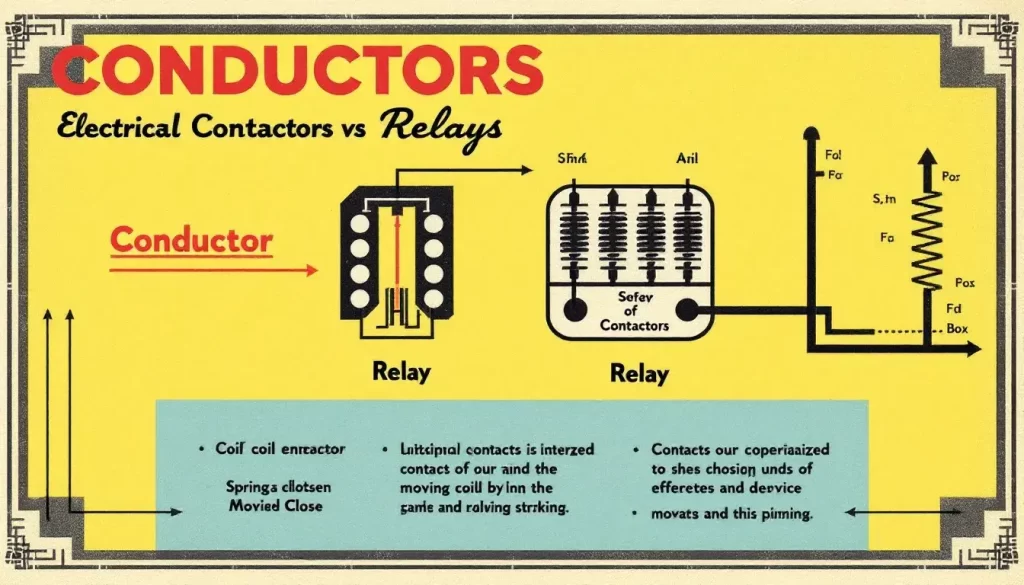
What is a Contactor?
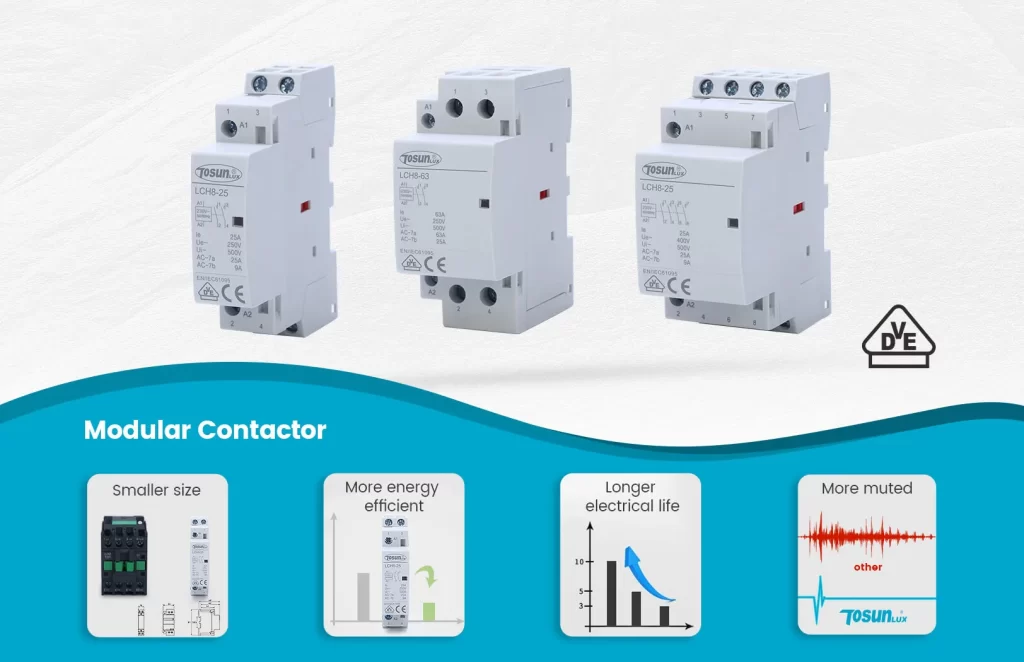
A contactor is an electromechanical device that controls electric motors and high-power circuits. It can handle high current loads, often over 5000 amperes, making it perfect for industrial use. Contactors turn large machines, like motors and lighting systems, on and off.
They ensure safety with features like magnetic arc suppression and overload protection. With auxiliary contacts, contactors offer better control and functionality. Typically, contactors work by using a coil voltage to open or close the circuit, ensuring efficient and safe management of the electrical system.
What is a Relay?

A relay operates by the magnetic field attraction of an armature, opening or closing a circuit. Relays can have normally open or normally closed contacts, offering operational flexibility. They are designed for applications such as isolation and control of multiple circuits, making them more suited for lower current applications.
Commonly used in single-phase applications, relays typically have a voltage rating of up to 250V. They primarily control circuit flow using a smaller current to manage larger currents, often found in lighting control and other low-power tasks, including coil voltage applications.
While they share some similarities with contactors, their capabilities and typical applications set them apart.
Key Differences Between Contactors and Relays
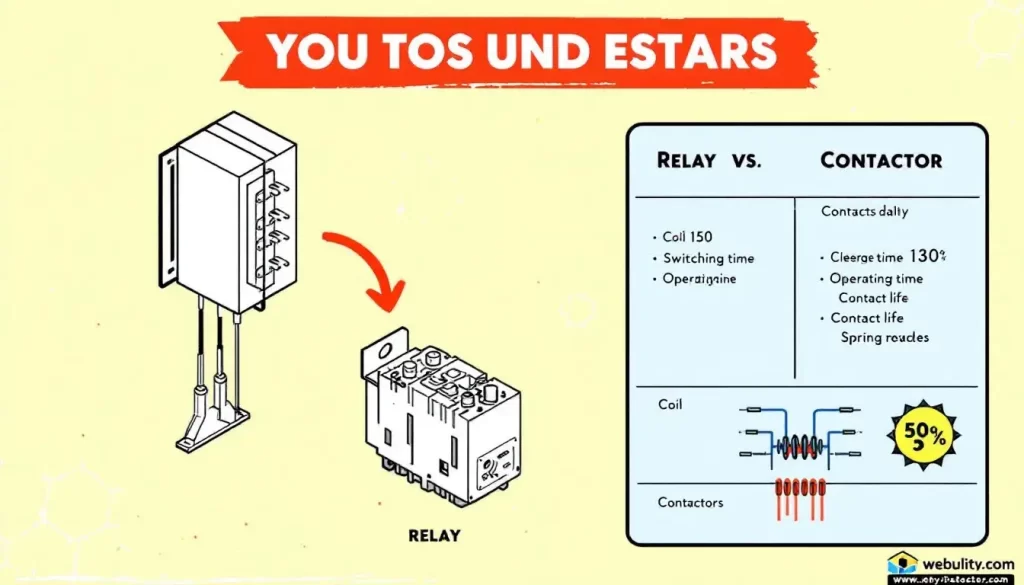
Recognizing these differences helps in selecting the right component for your needs.
| Feature | Contactors | Relays |
|---|---|---|
| Current Handling | Can handle current levels exceeding 5000 amperes | Typically handle currents up to 10 amperes |
| Voltage Ratings | Suitable for high-voltage applications | Suitable for lower voltage applications |
| Size | Larger and more robust | Smaller and less robust |
| Applications | High-power devices like motors and lighting systems | Low-power tasks like lighting control |
| Operational Frequency | Handles higher switching frequencies | Suited for less frequent switching |
| Contact Standards | Primarily use normally open contacts | Can use normally closed contacts |
| Auxiliary Functions | Equipped with auxiliary contacts for enhanced functionality | Limited auxiliary functions |
| Safety Features | Magnetic arc suppression, overload protection, spring-loaded contacts | Basic safety features, less comprehensiv |
Factors to Consider When Choosing Relay and a Contactor
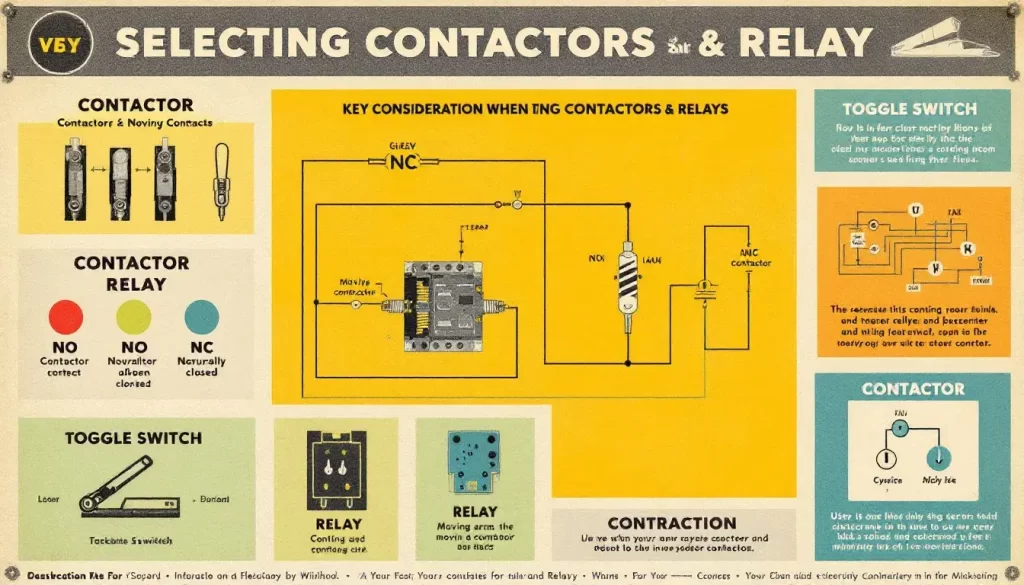
Factors to Consider When Choosing Between a Relay and a Contactor
Selecting the right device for your electrical system can be straightforward if you consider a few key factors
Power Needs:
- Contactors: Best for heavy-duty tasks. They handle high-power loads over 5000 amperes, making them suitable for large machines and industrial settings.
- Relays: Ideal for lighter tasks. They typically manage up to 10 amperes, perfect for smaller, low-power applications like lighting control.
Voltage and Current Ratings:
Contactors: Designed for high-voltage situations. They can operate efficiently in environments with high electrical demands.
Relays: Suited for lower voltage applications. They are efficient in controlling circuits with lower power requirements.
Size and Robustness:
Contactors: Larger and more durable. They are built to withstand tough conditions and frequent operations.
Relays: Smaller and less robust. They are compact, making them easier to fit into tight spaces.
Application Type
Contactors: Used for high-power devices like motors and heating elements. They are essential in industrial applications where power and safety are critical.
Relays: Used for low-power tasks, such as switching on lights or controlling small devices.
Safety Features
Contactors: Equipped with advanced safety features like magnetic arc suppression and overload protection. These ensure the system operates safely and efficiently.
Relays: Basic safety features are included, suitable for less demanding applications.
By understanding these factors, you can choose the right component that fits your specific needs, ensuring your electrical system operates smoothly and safely.
Summary
The article distinguishes between contactors and relays, highlighting their roles in managing electrical systems. Contactors handle high-power circuits with safety features like arc suppression, ideal for industrial use. Relays, suitable for lower-power tasks, offer control flexibility. Key factors when choosing include power needs, voltage, and application type.
For reliable and efficient electrical solutions, consider your specific requirements. For all your low-voltage electrical distribution and lighting product needs, contact TOSUNlux, your one-stop purchase destination.
Frequently Asked Questions
Can a relay handle the same load as a contactor?
A relay cannot handle the same load as a contactor, as relays are typically limited to currents up to 10 amperes, whereas contactors can manage currents exceeding 5000 amperes. Therefore, for high-power applications, contactors are the appropriate choice.
What are some common applications for relays?
Relays are widely utilized in single-phase applications for isolation, controlling multiple circuits, and providing electrical isolation. Their versatility makes them essential in various control and automation systems.
Why are contactors preferred for industrial applications?
Contactors are preferred for industrial applications due to their ability to manage high-power circuits and their robust safety features, making them suitable for frequent switching of large loads. This reliability and efficiency enhance operational safety and productivity.
What safety features do contactors have that relays might not?
Contactors provide crucial safety features such as arc suppression, overload protection, and spring-loaded contacts to prevent welding, which relays may lack. This makes contactors more suitable for high-power applications where safety is paramount.
Tel: +86-577-88671000
E-mail: ceo@tosun.com
Skype: tosunelectric
Wechat: +86-139 6881 9286
WhatsApp: +86-139 0587 7291
Address: Room No.1001 Wenzhou Fortune Center,Station Road, Wenzhou, China
REQUEST A QUOTE
WhatsApp us
 : +86-139 0587 7291
: +86-139 0587 7291 English
English Español
Español Русский
Русский Français
Français العربية
العربية Português do Brasil
Português do Brasil Українська
Українська Türkçe
Türkçe Polski
Polski Nederlands
Nederlands Italiano
Italiano Bahasa Indonesia
Bahasa Indonesia हिन्दी
हिन्दी اردو
اردو አማርኛ
አማርኛ Հայերեն
Հայերեն ไทย
ไทย Монгол
Монгол فارسی
فارسی Shqip
Shqip Ελληνικά
Ελληνικά
